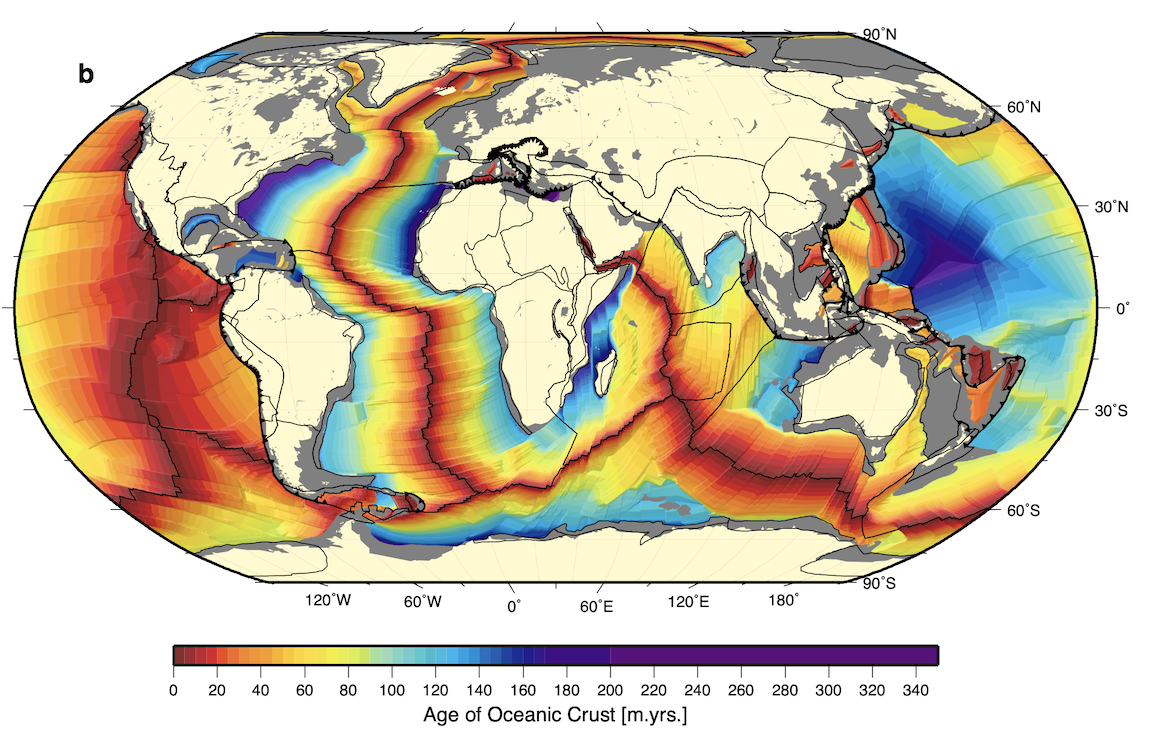
Abstract: We present an updated oceanic crustal age grid and a set of complementary grids including spreading rate, asymmetry, direction and obliquity. Our dataset is based on a selected set of magnetic anomaly identifications and the plate tectonic model of Müller et al. (2019). We find the mean age of oceanic crust is 64.2 Myrs, slightly older than previous estimates, mainly due to the inclusion of pockets of Mesozoic aged crust in the Atlantic and Mediterranean and improvements to the Jurassic Pacific triangle. This older crust is partly compensated by additional Cenozoic-aged back-arc basin crust not included in previous models. The distribution of spreading modes based on area of preserved crust is relatively equal between slow (20–55 mm/yr) and fast (75–180 mm/yr) spreading systems at 33 and 39%, respectively. Crust transitional between fast and slow, or intermediate systems (55–75 mm/yr), cover 20% of the preserved ocean floor with much smaller proportions of crust formed at ultra-slow (5%) and super-fast (3%) spreading systems. Slow and intermediate spreading systems exhibit the most stable behavior in terms of spreading asymmetry and obliquity, with the widest distribution of obliquities occurring at ultra-slow spreading systems, consistent with present-day observations. Our confidence grid provides a complementary resource for non-experts to identify those parts of the age grid that are least well constrained. Our grids in 6, 2 and 1 arc-minute resolution as well as our python workflow, isopolate, used to compute our datasets are freely available in online repositories and on the GPlates data portal.
Citation: Seton, M., Müller, R. D., Zahirovic, S., Williams, S., Wright, N., Cannon, J., Whittaker, J., Matthews, K., McGirr, R., (2020), A global dataset of present-day oceanic crustal age and seafloor spreading parameters, Geochemistry, Geophysics, Geosystems, doi: 10.1029/2020GC009214
To download a copy of the paper, click here.
To download the data and workflows associated with the paper, click here.

This work is licensed under a Creative Commons Attribution 4.0 International License.
![]()
